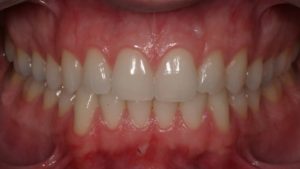In this article by Jason H. Goodchild, DMD, and Mark Donaldson, PharmD, published on dentistrytoday.com on September 13, 2022, the authors provide four essential tips for achieving excellent dental photography. They discuss the reasons for using dental photography, selecting the right equipment, capturing the correct views, and ensuring the right positioning to get the best shots. This article serves as a valuable guide for dental professionals looking to enhance their photography skills for various clinical purposes.
„Dental photography can make or break clinical practice, and ‚Four Tips for Dental Photography Done Right,‘ authored by Jason H. Goodchild, DMD, and Mark Donaldson, PharmD, is an outstanding article that delves deep into the intricacies of achieving excellence in this field. This comprehensive guide offers a modern perspective on dental photography, emphasizing the critical role it plays in diagnosis, patient education, marketing, and documentation.
The authors waste no time in addressing the evolution of imaging devices, highlighting the transition from traditional 35-mm cameras to the modern realm of intraoral cameras, point-and-shoot cameras, DSLRs, mirrorless cameras, and even smartphones. With this background, the article sets the stage for an exploration of four indispensable tips for successful dental photography.
The first tip, advocating the correct reasons for utilizing dental photography, is an eye-opener. It convincingly elaborates on ten core reasons for incorporating photography into dental practice, ranging from diagnosis to marketing and everything in between. This section helps practitioners appreciate the multifaceted benefits of dental photography, ensuring that it becomes an integral part of their workflow.
The second tip emphasizes the importance of selecting the right equipment. The article offers valuable insights into the choices available for various scenarios, whether it’s quick patient snapshots or high-quality marketing images. It expertly guides readers through camera options, lenses, and flashes, providing clarity on making informed decisions. Notably, the article acknowledges the impact of smartphones on the camera market and addresses the pros and cons of using these devices for dental photography.
The article excels further with its third tip, which discusses the right views for capturing dental images. Detailing the American Academy of Cosmetic Dentistry’s recommended views and aligning them with specific needs like ClearCorrect and Invisalign, this section ensures that practitioners can confidently capture the essential angles to showcase patient conditions comprehensively.
Lastly, the fourth tip outlines the significance of correct positioning to capture the perfect shots. In-depth instructions and illustrative figures make it easy for practitioners to understand how to position patients, cameras, and mirrors for each shot. This level of detail ensures that every practitioner, from novices to experts, can follow the instructions and elevate their photographic skills.
In conclusion, ‚Four Tips for Dental Photography Done Right‘ is a game-changing article that empowers dental professionals to elevate their photography skills to new heights. The authors‘ expertise shines through, and their meticulous explanations, coupled with real-world examples, transform this article into an invaluable guide. This comprehensive resource is a must-read for any dental practitioner aspiring to excel in the art of dental photography.“





